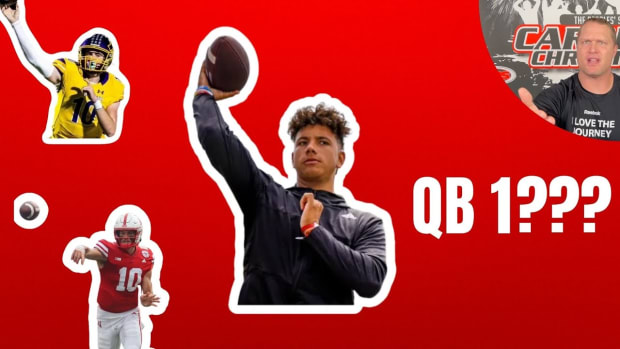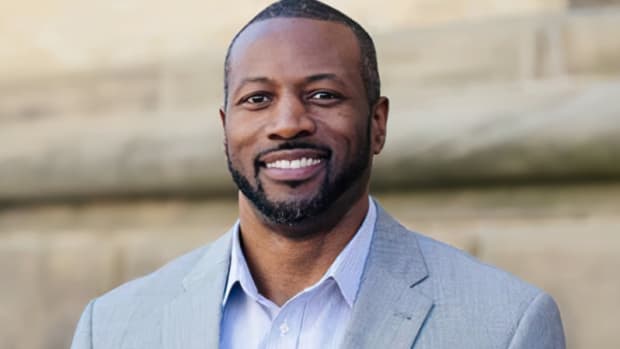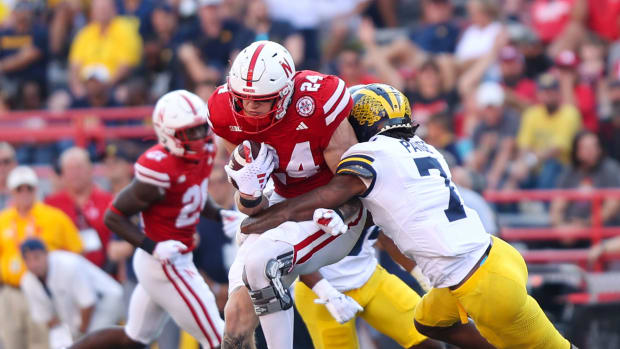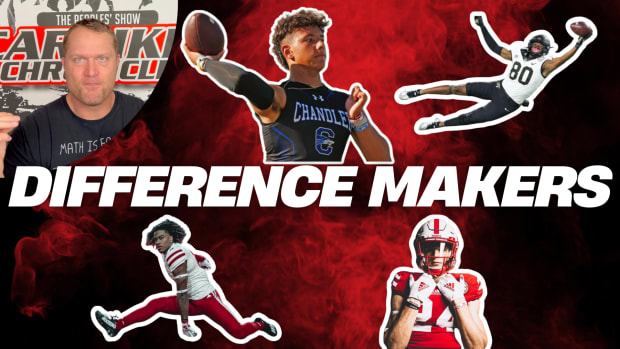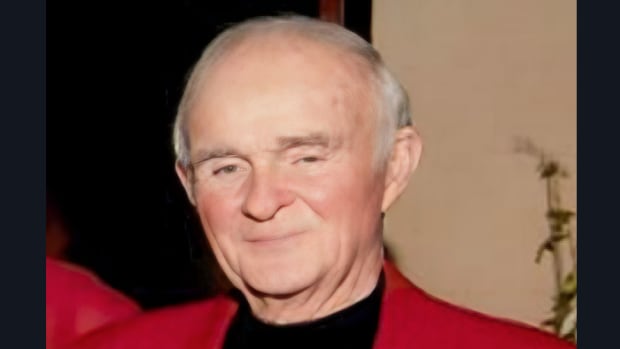Tad Stryker: Tough-Minded
Can Nebraska put together a physical offense under Matt Rhule? And if so, what repercussions would that have on the wide receiver room, which has expanded at a surprising rate over the past few weeks? What would a physical, tough-minded group of wideouts look like?
Let’s define our terms. Almost any offense can claim to be physical. Football is a violent sport. But during the Mike Riley and Scott Frost years, Nebraska had an offensive style that was based more on finesse than physicality. That’s one of the biggest reasons for Nebraska’s woeful performance to date in the Big Ten.
So what’s a physical offense? Here’s how I define it: Can you rely on your offense to run the ball for two yards when it really needs it? For example, on third-and-2 at your own 35-yard line when you’re leading 24-21 with three minutes left in the game.
You’re right; nobody can pick up a first down 100 percent of the time in that situation, but can you convert that play at least 75 percent of the time? And is your running game enough of a threat that it renders the defense extremely vulnerable to play-action passes in said situation? Since 2014, the Nebraska offense has failed this test consistently, except the last half of 2018, with Devine Ozigbo toting the ball.
A physical offense requires a good offensive line, which used to be a given in Lincoln but lately has been a distant dream. It requires at least a couple of quality running backs, or a decent running back/quarterback combination. And a tight end and wide receivers who block with gusto. That is a huge question mark. It requires physical, tough-minded players in those roles. Size is not as important as it might seem in that regard. I consider 5-foot-9, 160-pound Abdul Muhammad a much more physical, tough-minded wideout than 6-4, 225-pound Omar Manning turned out to be a generation later.
Rhule inherits four promising running backs with game experience in Anthony Grant, Ajay Allen, Gabe Ervin Jr. and Rahmir Johnson. Given the tone of Rhule’s rhetoric since he was hired, I can understand why Husker running backs would be excited. He’s also been aggressive in his bid to improve the offensive line through the transfer portal. That is, and will continue to be, the biggest story in Nebraska football this year. But where and how do the wide receivers fit in? Why did the highly recruited Malachi Coleman decide to stay home and play with the Huskers if they’re not going to consistently line up four or five wide? Why is Zavier Betts coming back to the Husker program if they’re going to pound the football, as Rhule has consistently indicated?
Rhule is getting highly sought wide receivers to jump aboard. What gives? And how will Garret McGuire, his 24-year-old position coach, handle this opportunity?
For decades, during the Osborne/Solich years, and then again under Bo Pelini, I’ve heard one or more variations of this theory: “You’ll never get good wide receivers to come to Nebraska because they have to block too much / won’t get enough touches.” That doesn’t make a lot of sense if you have enough talent and confidence, with a top-notch work ethic. If you have that going for you, the ball will come your way. On a related note, I hear that fullbacks and wideouts get along just fine on the San Francisco 49ers.
Starting in 2015, Riley — and to a lesser degree, Frost— believed that theory enough to emphasize the passing game and downplay the power running game. Did that approach result in top-notch wideouts flocking to Lincoln? Nope, not enough of them, anyway. Consider this: If even a couple of productive wide receivers (think of someone in the three- to four-star mold of Jordan Westerkamp) had played in Lincoln during each of those years, going the finesse route might have paid off, but very few of those Riley/Frost-recruited wideouts ever materialized. Was it a recruiting problem? Was it a development problem? Probably some of both. The bottom line is you can count them on one hand — only Stanley Morgan, Wan’Dale Robinson, Samori Toure and Trey Palmer were difference-makers over that eight-year stretch.
Rhule inherited Marcus Washington, Alante Brown and Tommi Hill. I credit Rhule with recruiting Betts, Coleman, Jalen Lloyd, Brice Turner, Billy Kemp, Joshua Fleeks and Isaiah Garcia-Castaneda. There are 20 wide receivers on the roster as of late January. I suspect at least a couple of scholarship wideouts and a few others will leave after the spring game, but I expect an uptick in productivity next fall.
One of the biggest signs of the long-awaited turnaround in Nebraska’s football fortunes would be a young, physically gifted wide receiver corps buying in 100 percent to the “body blows” theme on offense, if for no other reason than a successful running game will help open up the play-action passing game. It’s just one element of complementary football, a concept that eluded Frost during his entire tenure.
A physical offense can be balanced, and the best ones usually are. One sign of a physical offense is wideouts who are a constant threat to get yards after contact. There’s been a profound YAC drought in Lincoln lately, both from pass receivers and running backs.
If athletic director Trev Alberts is right, if Rhule and his staff have far surpassed Alberts’ expectations as far as work ethic is concerned, they’ll have full authority from their players to build a culture that demands toughness and physicality.
Get your Huskers tickets from SI Tickets here.


